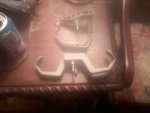Thank you for the compliment, and you're welcome for the ideas.
Generally on long pulls, I will get pull string from the bucket, get my dead straight path around/over/under all obstructions, then tie it off, and put up all my hangers around the pull string. If it's steel or concrete, I'd use Hilti cable hangers:
https://www.us.hilti.com/direct-fastening/electrical-&-mechanical-fastenings/r1683
for drywall/wood, I just use D-rings. and like you say, use the hangers just like conduit. Once the cable is pulled, there is no going back a second time to secure it. For 7 cables max, you could use the smallest D-rings or the Hilti hangers. Lube the wire with Clearglide and you can pull 20+ cables at once 200' by yourself. I like your arc idea - I've used a similar method to build in service loops in IDF/MDF.
The Hilti hangers have a self-closing feature which is quite nice. and 5' intervals would meet EIA/TIA spec as well.
If you need either (D-rings or the Hilti hangers), send me a PM - I've quite a few of both I'd like to get rid of, and I can beat any price you'd find on them.
I dont know if you'll be able to see this pic:
https://www.flickr.com/photos/32712057@N06/3390821717/in/dateposted-public/
if you cant, it's a short piece of PVC on a corner to keep cables from being pinched on a steel corner bead on drywall
eta: Hilti hooks come in 3 sizes; here is a better pic:
View attachment 14716
the small hangers can be hooked together to form a 'gull wing' - the bottom hanger is 2 of these hooked together
and ravenvalor, what you can do instead of building rollers or buying them,or needing a 2nd manlift, is have one guy on the ground pull cable to a corner, pulling slack out for the next guy. Measure off what you need, walk it out, then, using a continuous pull string, have the next guy pull, while the ground guy makes sure it doesnt get hung on anything. I assume you'll be working 15-25' off the ground - once the slack is out of the first corner guy's hands, the last 10-20' should pull w/o getting bound up. A 12' A frame would help out a bit with that. If there are more corners to pull, leave a loop hanging at each corner that you can reach from a ladder or the ground - that way, each pull is basically straight, and you wouldnt need those 100$ pulleys at all.
I hope I described that fairly well....

